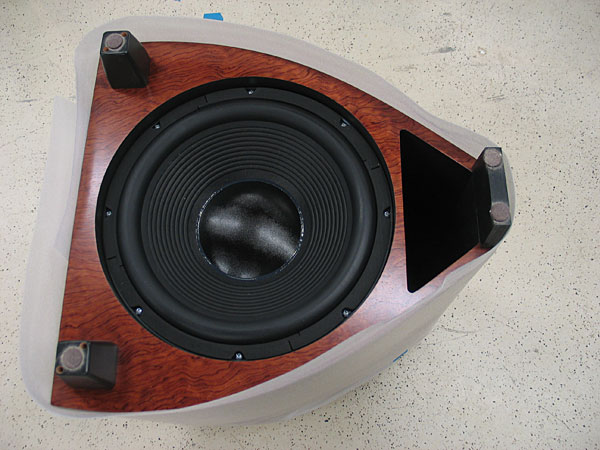| Columns Retired Columns & Blogs |
The Volti Vittora is built in a shop—as opposed to a garage, a driveway, or somebody's mother's basement—solely dedicated to the production of loudspeakers and loudspeaker components, and which Roberts has equipped with state-of-the-art power tools and an air-filtration system.
Obviously Greg Roberts has invested in a professional limited production facility in order to improve quality and make a living. Yet, if one reads his own website:
I do the design and construction of the crossovers myself, using very high quality parts, and I have spent countless hours tuning the crossovers by ear, and confirmed with testing.
Nothing wrong of course with this statement but truly, this is the perfect example of DIY audio applied to speakers. That the article is trying so hard to distance itself from that is puzzling:
Thus, if, from the technological sanctuary of his parents' house, an audiophile has outwitted every professional manufacturer by transforming a spool of RadioShack wire and an empty Quaker Oats carton into the cheapest and best-sounding loudspeaker of his own experience, I offer both my congratulations and my assurance that that is an opinion to which he is entitled. But I'll endure in reserving the right to remain uninterested in hearing the thing, if only to avoid stealing from that modern-day Tesla the pleasure of sniveling that he is underappreciated, only because the press is too corrupt to declare his genius. (I'm very considerate that way.)
Yet, in the value rant there is exactly the answer to the question I asked about the Lamm:
Which finally brings us back to the subject of value. I suppose I'm qualified, if not obliged, to make two sorts of comments: general observations regarding the ratio between a product's asking price and the apparent cost of its design and manufacture, and personal observations on the ratio between that price and the quality of its sound. In fields—woodworking among them—in which I have useful experience, I can say whether a thing is priced fairly or not, relative to the cost of its making; but when it comes to sound quality, my value judgments are restricted to personal opinion—as are yours.
In order to bring this value, Roberts does not skip on quality drivers. His midrange 2" compression retails around $700 for DIYers. Sure he could get a discount but this is not some little basket powered by a fridge magnet. His other model, the Alura is even less expensive and yet features serious professional drivers. As the article points out, woodworking is outstanding.
This is the perfect example of small series DIY artisanal production that provides value and deserves respect. Other DIYers have not chosen to make a living of their interest, yet it does not mean their achievement is less respectable, and certainly they do not deserve scorn. If anything, they're the one laughing all the way to their bank...![]()









































